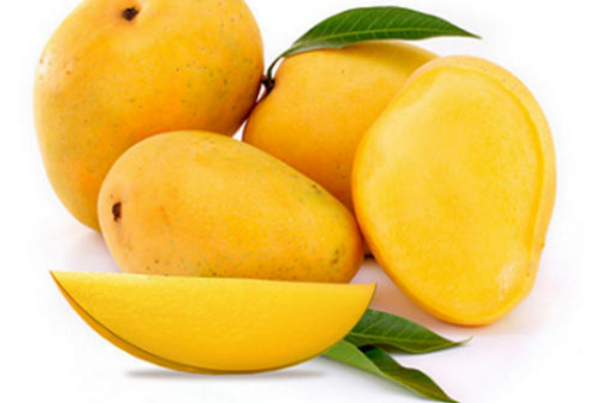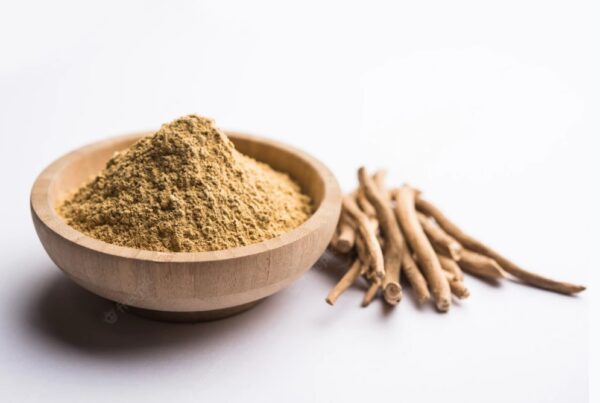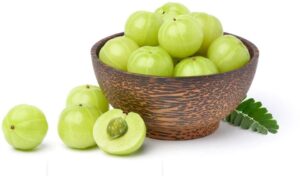
Amla (Phyllanthus emblica) has its origins from the Sanskrit word ‘Amalki’. It is also known as emblic myrobalan, myrobalan, Indian Gooseberry, or Malacca tree in different parts of the world.
Area :-
Uttar Pradesh and Himachal Pradesh are major amla growing states in India. It is largely cultivated in Uttar Pradesh (Azamgarh, Pratapgarh, Varanasi and Barelli districts), Gujarat, Maharashtra and Karnataka.
Plant Mohphology :-
The Amla tree is small to medium in size, reaching 1–8 m (3 ft 3 in – 26 ft 3 in) in height. The branchlets are not glabrous or finely pubescent, 10–20 cm (3.9–7.9 in) long, usually deciduous; the leaves are simple, subsessile and closely set along branchlets, light green, resembling pinnate leaves. The flowers are greenish-yellow. The fruit is nearly spherical, light greenish-yellow, quite smooth and hard on appearance, with six vertical stripes or furrows.
Sowing Time :-
Amla cultivation is done in the month of July to September. In Udaipur cultivation is done in the month of January to February.
Climate Requirement :-
Annual rainfall of 630-800 mm have given good yield. The mature plants can tolerate freezing temperature as well as temperature up to 46°C. But, the ideal temperature for the sowing of the crop is considered to be between 22-30°C.

Soil Requirement :-
Amla has a hard nature, therefore it can be grown in light as well as heavy soils except purely sandy soil. In terms of the soil nature, it can be grown in slightly acidic to saline soils and can be grown in calcareous soil. It gives best result when grown under fertile-loamy soil with good drainage system.
Field Preparation :-
The pits of 1m3 are prepared during May-June at a distance of 4.5 m spacing and should be left for 15-20 days exposed to sunlight. Each pit should be filled with surface soil mixed with 15 kg farm yard manure and one kg of super phosphate before planting the grafted seedling.
Varities :-
There are many varieties of Amla such as Banarasi, Krishna, NA-9, NA-10, Francis, NA-7, NA-6 and Chakiya. Out of all these varieties, Banarasi is the most important variety for commercial purpose.
Timeline Of The Crop :-
It takes 120 days for Amla crop to be ready for the final harvesting. The ideal timeline of the whole process is as shown below :
| TIMELINE | 120 days | |
| 1st 10 days | Nursery preparation | |
| 2nd 10 days | Sowing | |
| 3rd 10 days | watering | |
| 4th 10 days | n/a | |
| 5th 10 days | n/a | |
| 6th 10 days | n/a | |
| 7th 10 days | n/a | |
| 8th 10 days | n/a | |
| 9th 10 days | n/a | |
| 10th 10 days | n/a | |
| 11th 10 days | Harvesting | |
| 12th 10 days | Harvesting |
Seed Sowing :-
- Amla cultivation is done in the month of July to In Udaipur cultivation is done in the month of January to February.
- Sow budded seedling at a distance of 5m x 4.5m in the month of May-June.
- The pits of 1 metre square are dug and are left as such for 15-20 days for exposure to
- Transplanting of budded seedlings in main
Cropping System :-
Amla being a deep rooted, deciduous tree with sparse foliages, is an ideal plant amicable for 2 or 3 tier cropping system. Fruits, vegetables, flowers and a few medicinal and aromatic plants are well suited for intercropping in amla orchards.
NUTRIENT Management :-
Use of green manure crops is an ideal preposition for soil enrichment. Paddy straw, sugarcane trash and farmyard manure have shown better response. Mulching with organic wastes over a number of years shall be helpful in improving the organic matter content, infiltration rate, and restricting the upward movement or soluble salts and thus escaping their toxicity menace in salt-affected soils.
Water Management :-
In summer, apply irrigation with interval of 15 days and in winter, give water through drips @25-30 litres/day/tree in October-December month. During monsoon months, it does not require irrigation. Avoid irrigation during the flowering period.
Weed Management :-
Do frequent weedings to make field weed free. Training and pruning is also done. Criss cross branches are cut and only 4-5 straight branches are left behind for further growth.
Mulching is also an effective way to control soil weeds. cipf-es.org In summer, mulching is done from the base of tree up agoradesign.it to 15-10cm of the trunk.
Pest Management :-
Pests:
Bark eating caterpillar: They damage the stem and bark by feeding themselves.
sintomasdelsida.org aligncenter” src=”https://samruddhiorganic.com/wp-content/uploads/2022/03/bark-eating-caterpillar-300×234.jpg” alt=”Amla” width=”368″ height=”287″ />
Gall caterpillar: They bore in apical meristem and makes tunnel.
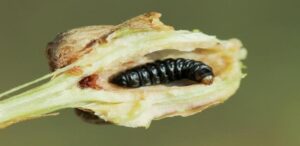
DISEASES :-
Internal necrosis
It is mainly caused due to deficiency of Boron. Tissues turn brown and then black are the symptoms of this disease.
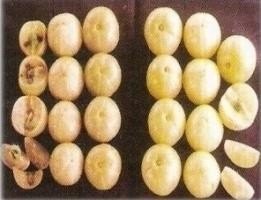
Application of boron @0.6% is done in the month of September to October to get rid of this disease.
Fruit Rot :-
The symptoms of this disease are swelling and color changing of fruits.
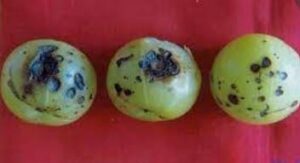
Application of borax or NaCl @0.1%-0.5% is done to cure from this disease.
Rust :-
Circular red rust appear on the leaves and on fruits.
Application of Indofil M-45 @0.3% is given twice. Once is given in early September and then after 15 days to control crop from diseases.
Harvesting :-
Plant starts yielding in about 7-8 years after planting. Harvesting is done in the month of February when fruits are green in color and have maximum ascorbic acid content.
Yield :-
A full grown amla plant can yield up to testosterone cypionate 200 kg fruits per year.


